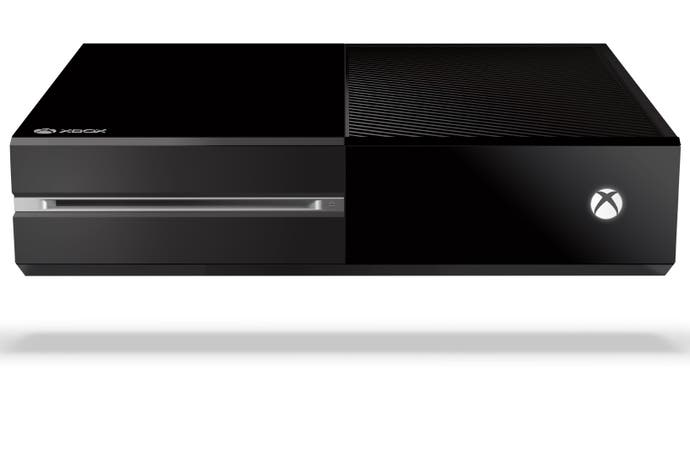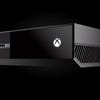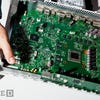Spec Analysis: Xbox One
Is PlayStation 4 really more powerful?
As a core gamer, it's difficult not to be frustrated by the manner of yesterday's Xbox reveal. Microsoft set out to champion its innovative platform, its vision for multimedia and a renewed focus on making Kinect relevant again as a convincing alternative to the traditional remote. But we wanted to know about the new generation of gaming and the approach in revealing Xbox One titles via trailers with no single identifiable example of actual live gameplay was an enormous error in judgement. The problem is that next-gen trailers look no different to current-gen trailers - so there was no groundbreaking innovation, no authenticity and therefore no buzz. Even the promising Call of Duty: Ghosts reveal - perhaps the closest thing we had to actual gameplay - was in-engine footage apparently running on Xbox One hardware. Yet there were no assurances that this was actually real-time, or that this would be the actual quality of the game we will be playing in November.
There was a similar level of inscrutability about the actual specs of the Xbox One hardware too. In the presentation itself, Microsoft talked in broad strokes about the internals of the box - eight CPU cores, 8GB of (non-descript) RAM, multi-channel 802.11n WiFi, and a Blu-ray drive. But the only new information we had that hadn't previously leaked was the inclusion of a 500GB hard drive and a five billion transistor count for the main processor. Gaming specs like the CPU clock-speed, the type of RAM, the make-up of the graphics core - all the most controversial elements of the leaked information, in other words - were ignored. The cynical may suggest that highlighting this would do Xbox One no favours in comparison to the PlayStation 4, while the Microsoft faithful could perhaps hold out hope that the more disappointing elements of the previous leaks were outright wrong.
A follow-up architecture panel hosted by Microsoft's Larry Hyrb soon put paid to the latter, more optimistic appraisal of the situation. Very early on it was established that ESRAM is indeed incorporated into the Xbox One design - essentially a large, very fast cache of embedded memory attached to the GPU and CPU that helps to make up the bandwidth deficit inherent in using slower memory. So even without direct confirmation, we now knew that the 8GB of memory in Xbox One is indeed DDR3 as opposed to the bandwidth-rich GDDR5 found in the PlayStation 4 (and Wired's internal photography of the One confirms 2133MHz DDR3 Micron modules). Xbox One may well have a latency advantage over PS4 and power consumption will probably be lower, but GPU bandwidth - a key element in graphics performance - is indeed more limited on the Microsoft hardware.
"A fine design with a premium finish, our only major reservation about the Xbox One's hardware design is the return of the power brick."
In terms of the GPU hardware, hard information was difficult to come by, but one of the engineers did let slip with a significant stat - 768 operations per clock. We know that both Xbox One and PlayStation 4 are based on Radeon GCN architecture and we also know that each compute unit is capable of 64 operations per clock. So, again through a process of extrapolation from the drip-feed of hard facts, the make-up of the One's GPU is confirmed - 12 compute units each capable of 64 ops/clock gives us the 768 total revealed by Microsoft and thus, by extension, the 1.2 teraflop graphics core. So that's another tick on the Durango leaked spec that has been transposed across to the final Xbox One architecture and the proof we need that PlayStation 4's 18 CU graphics core has 50 per cent more raw power than the GPU in the new Microsoft console. Now, bearing in mind that we fully expect PlayStation 4 and Xbox One to launch at similar price-points, how did this disparity come about?
The answer to that comes down to a specific gamble Sony made that Microsoft could not - the utilisation of a unified pool of GDDR5 memory. In the early days of PS4 development, only 2GB of this type of memory looked viable for a consumer-level device. As higher density modules became available, this was duly upgraded to 4GB. By the time of the reveal back in February, Sony had confidence that it could secure volume of 512MB modules and surprised everyone (even developers) by announcing that PS4 would ship with 8GB of unified GDDR5 RAM. The design of its surrounding architecture would not need to change throughout this process - one set of 16 GDDR5 chips would simply be swapped out for another.
Microsoft never had the luxury of this moving target. With multimedia such a core focus for its hardware, it set out to support 8GB of RAM from day one (at the time giving it a huge advantage over the early PS4 target RAM spec) and with serious volume of next-gen DDR4 unattainable in the time window, it zeroed in on supporting DDR3 and doing whatever was necessary to make that work on a console. The result is a complex architecture - 32MB of ESRAM is added to the processor die, along with "data move engines" to courier information around the system as quickly as possible with bespoke encode/decode hardware to alleviate common bottlenecks. Bottom line: if you're wondering why Xbox One has a weaker GPU than PlayStation 4, it's because both platform holders have similar silicon budgets for the main processor - Sony has used the die-space for additional compute units and ROPs (32 vs. 16 in One), while Microsoft has budgeted for ESRAM and data move engines instead. From the Xbox perspective, it's just unfortunate for Microsoft that Sony's gamble paid off - right up until the wire, it was confident of shipping with twice the amount of RAM as PlayStation 4.
"What we found out yesterday confirms practically all aspects of the leaks we previously reported on - and yes, GPU-wise, PS4 is indeed more powerful than the Xbox One."
| Leaked Spec | Confirmed? | |
|---|---|---|
| CPU | Eight AMD cores running at 1.6GHz, x86 architecture | Yes, aside from clock-speed |
| Graphics Core | 12 compute units providing a total of 768 threads, 800MHz, 1.2 teraflops | Yes to threads and thus core count, teraflops dependent on clock-speed which is unconfirmed |
| Memory | 8GB of DDR3 RAM (68GB/s bandwidth) plus 32MB of ESRAM (102GB/s) | ESRAM and DDR3 confirmed, ESRAM bandwidth unconfirmed but highly likely |
| Memory | Large hard drive, 50GB 6x Blu-ray drive | 500GB internal HDD confirmed, Blu-ray drive confirmed (no specifics but again, spec is likely to be accurate) |
| Networking | Gigabit Ethernet, WiFi, WiFi Direct | No explicit confirmation on WiFi Direct, but Gigabit LAN and 802.11n WiFi confirmed. |
| Hardware Accelerators | Move engines, image, video, and audio codecs, Kinect multichannel echo cancellation hardware | Move engines and Kinect confirmed, hardware video encoder demonstrated |
So in what ways will Microsoft's lower-risk approach to the development of the Xbox One architecture pay off? Well, in essence it has swapped one gamble for another - it is relying upon a vision of multimedia convergence in one box to provide a unique selling point that PlayStation 4 or any other competitor simply does not have.
Microsoft wants you "to have a relationship" with your TV, and to that end, Xbox One has a new connection that no other console possesses - an HDMI input (supporting 1080p, 3D, even 4K - at least the 30Hz version of it supported in HDMI 1.4a). The idea is that you can daisy-chain your existing set-top box into the new console and seamlessly switch between TV and gameplay, and even run apps in parallel with both of them. So, for example, in theory, you can play Forza 5, switch over to watch the Formula One and take a Skype call simultaneously. Using Kinect voice control, you can also carry out functions usually achieved with a separate remote control - choosing a channel for example. And it's not just TV that's accessible either, movies, music and the internet are also available too, backed by a vision of seamless integration. The system is remarkable in action, made possible via the use of two virtual machines running in parallel, controlled by a hypervisor.
It's a fundamental part of the Xbox One proposition and its major point of differentiation with PlayStation 4. Potentially it is also its Achilles Heel, for several reasons. Firstly, Microsoft needs to be able to make this work with any and all set-top boxes in the world. Its solution appears to be the time-honoured IR blaster - a little cable plugs into the rear of the One, its emitter pointing towards the infra-red input on the set-top box. The console essentially emulates the functions of the existing remote control, relying on precise positioning to beam the signal into the IR receptor on the box. Historically it is fraught with inaccuracy, and we do wonder how Microsoft aims to address this. Secondly, the One itself has no DVR functionality, meaning that it is layering its own user interface over the existing one - not exactly a useful set-up.
More than that, the system appears to have been designed with a very specific US focus, where cable TV boxes are the norm. What about TVs with built-in decoders, either terrestrial and satellite in nature? Not everyone wants subscription TV, so not everyone has a set-top box - but they're still enjoying a large range of digital channels and a decent amount of HD programming. Perhaps more pertinently, Microsoft appears to have invested a massive amount in accommodating live TV when the overall trend is moving towards time-shifted viewing and streaming media - something it almost completely ignored in its presentation. It's a very curious decision and a massive gamble. It's clear that the firm seeks to bring gaming and other media more closely together than they ever have been but we suspect that the success of this endeavour will come down to the usefulness and desirability of the companion content that was being demonstrated. Other than that, Microsoft seemed to be suggesting that changing inputs was a massive problem for people - something we find rather hard to grasp.
"Microsoft's big gamble is on completely integrating Xbox One into the living room, instantly swapping between gameplay, TV, movies and music."
As of now, we remain unconvinced by the TV functions but we love the underlying technology that makes it happen, but the focus on Xbox One as a set-top box clearly extends beyond functionality and towards its aesthetic too. We rather like its premium-looking if rather boxy design, with its clean minimalist lines and matching Kinect. In terms of functionality, the jury remains out on Microsoft's motion interface - while the focus was on the 1080p RGB camera and the new infra-red feed (both previously mentioned in Microsoft's leaked whitepapers), no mention was made of the depth resolution which previous information suggests is a mere 512x424.
Extrapolate that out to encompass the enhanced field of view and additional depth information resolved isn't exactly a revelation compared to the first Kinect. Now, according to Eurogamer's man on the scene, Tom Bramwell, Microsoft itself reckons that actual detail being resolved is about 3x that of the original - perhaps suggesting that it's not raw pixel count that is the important element, but rather the quality of those pixels and how they are processed. Or it may simply be the case that the sensor has been upgraded since the leaked document was first published - exchanging a sensor is far simpler to achieve than re-architecting the main system processor, for example.
What we do know is that lag has been reduced, but as a high-speed controller there's nothing Microsoft can do to address the fact that movement of fingers on a joypad is inherently less laggy than flapping our arms about. There's a 30-60ms lag reduction with the next-gen Kinect depending on which information you choose to believe (Microsoft's leaked whitepaper vs. Microsoft tech person talking to Geoff Keighley on GameTrailers) and while welcome in either case, this will not radically transform Kinect into a platform appropriate for core gaming. However, the ubiquitous nature of Kinect 2.0, packaged with every console opens up a range of possibilities.
What we do find intriguing are Microsoft's claims of Kinect being used as a kind of biometric monitor, with heart-rate being discerned by fluctuations in the blood flow in the user's face. Kinect also tracks your expression too, opening the door to games being able to adjust gameplay according to how the player feels. However, bearing in mind the various inaccuracies in the overall tracking spotted at the hands-on event, you have to wonder whether devs will be able to rely upon the accuracy - and consistency - of the data, especially when the next-gen Kinect is supposed to allow for gamers up to four metres away from the camera.
"The new Kinect is clearly a generational leap over the original but the jury's still out over its practical applications during gameplay - and the quality and consistency of the data it transmits to the Xbox One console."
We do rather like the new take on the Xbox 360 controller though - a smart evolution of the current, winning design. It's reassuring that the platform holder hasn't tried to rewrite the rulebook here but has made genuinely useful enhancements - the "HD" rumble addition which adds force feedback to the triggers is a great idea, while we like the look of the more grippy analogue sticks. There's talk of a 15 per cent reduction in latency, but with the current 360 pad operating with around 8ms lag, you'll probably struggle to tell the difference. Not so welcome is the fact that the controller still needs replacement batteries as opposed to the built-in rechargeable cells found in the Dual Shock 3.
The design of the console itself also looks fine, with a logical port arrangement on the rear - two USB 3.0 ports (and another on the side), a bespoke Kinect input (also thought to be USB in nature, though not in form factor), dual HDMIs, toslink audio output for legacy surround sound set-ups, IR blaster and a power input. Unfortunately, Xbox One requires an external power brick - as evidenced by shots of the internals provided by Wired.
The glimpse of the the internals offered up by the Wired shots are intriguing: we have a large, square motherboard with a standard-sized slot-loading Blu-ray drive on the left, while next to it we see a vast heatsink and fan. First impressions are that Microsoft has clearly learned its lessons from the design of the Xbox 360 - the cooler is absolutely massive, sporting copper heatpipes to provide optimal transmission of heat to the sink, before being propelled out of the case by the large fan (the larger it is, the slower it has to spin and thus the more quiet it becomes). Behind the cooler we have a standard 2.5-inch hard drive. Microsoft says that it's not user-replaceable, meaning that 500GB is your lot in terms of internal storage. However, the USB 3.0 ports on the rear and side of the unit accommodate extra storage - we'll assume that this would be standard drives as opposed to any kind of proprietary device the platform holder would like to impose on us.
"Xbox One's internals are cleanly designed with a focus on keeping things cool and quiet - hence the high quality heat sink and the rather large fan."
In essence, the internals of the console are very much a PC boiled down to its constituent components - processor, RAM, southbridge - all integrated into the motherboard. There's no daughter die that we could see attached to the processor so the 32MB of ESRAM does appear to be integrated into the AMD processor itself. Microsoft says it is compromised of five billion transistors (for comparison Nvidia's GTX Titan has just over seven billion dedicated to GPU power alone) - an astonishingly high amount which explains the rather conservative clocks - believed to be 1.6GHz for the cluster of AMD Jaguar CPU cores and 800MHz for the GPU. Typically, the larger the processor, the more difficult it is to keep cool, necessitating lower running speeds. In theory, Microsoft could run the chip faster and claw back some of the performance deficit against PS4 but in practice, this would impact the amount of useable chips Microsoft is able to fabricate, sending production costs (not to mention potential failure rate) spiralling. Clock-speed is pretty much the only major variable in the spec that remains wholly unconfirmed, but we're pretty confident that the speed of the chip remains unchanged.
But perhaps the most curious thing about the Xbox One reveal was the manner in which Microsoft's engineers - and Turn 10's Dan Greenawalt - referred to both "transistors in the box", and "transistors in the cloud", the inference being that Xbox One could evolve by offloading mathematical computations from the local hardware to the ginormous servers Microsoft is prepping for the new system's launch. There was talk of new worlds being generated in the cloud, and less latency-specific systems like physics and AI being processed outside of the console. It's true that this is an exciting prospect in terms of creating massively multiplayer open worlds where "next-gen" dedicated servers will be required to keep track of everything that's going on and feed that out to the gamers.
However, even the 20-30ms latency we tend to see on the raw exchange of data over the internet is an absolute lifetime in terms of rendering games locally, plus of course there's the fact that any game embracing this won't work unless your internet connection is always on. We're certainly curious about how this particular facet of Xbox One gaming will evolve in the long term, but we weren't particularly convinced by the ideas set out by the panel - many which came across somewhat as wishful thinking thrown out there with no real exploration or real-life applications.
Certainly in the short term (read: E3) Microsoft has to work really hard in winning back the core in the face of a reveal that seemed so out of touch with what the core audience wanted to see. On a higher strategic level, you can perhaps see the logic behind Microsoft's approach - there's the suggestion here that it's Apple and Google that are seen as the long-term competitors rather than Sony and Nintendo. Microsoft has seen that living room usage of their consoles has changed dramatically over the course of the current generation, that games are just a part of the overall mix, and that's absolutely fine - but it's difficult to reconcile this thinking with the complete omission of any live gameplay at a console reveal event. Of course, in the final analysis, the success of Xbox One won't be down to its specs or its TV integration. It'll be down to the games and in the face of the immediate challenge offered by PlayStation 4, Microsoft clearly has its work cut out.
























